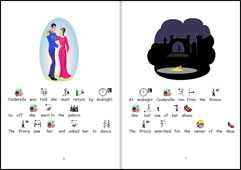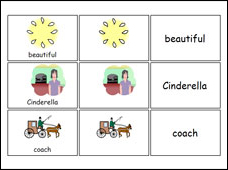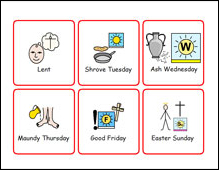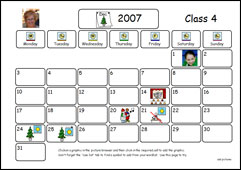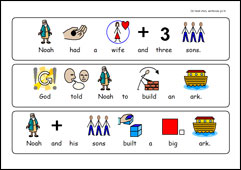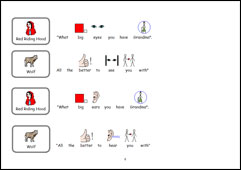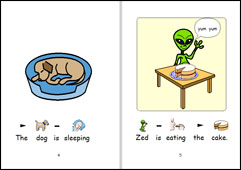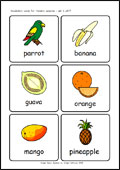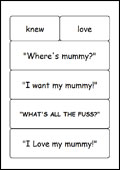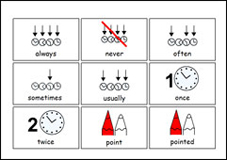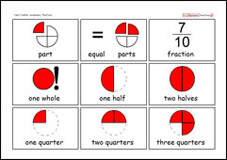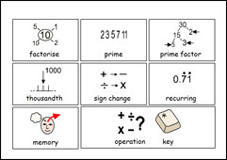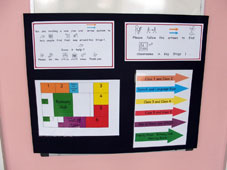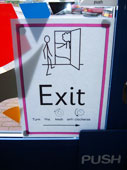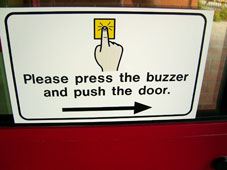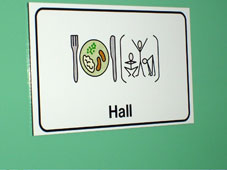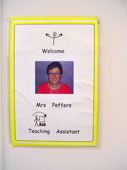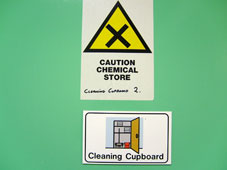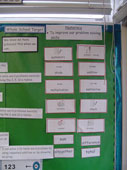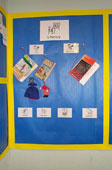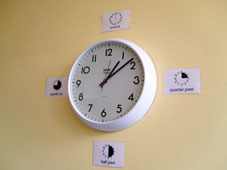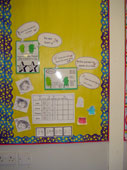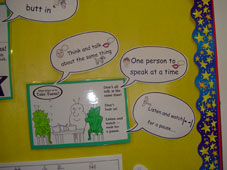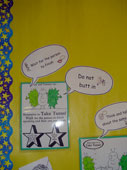Impact related to Every Child Matters
Achieving Economic Well Being
: not being prevented by ecenomic disadvantage from achieving full potential in life
NB: Click on the images
to see larger versions
Symbols can contribute to economic well being of the individual and the learning environment. Economic benefits within the School Environment enable schools to meet targets by supporting the curriculum with symbolised resources.
Examples of how symbol supported materials have helped pupils.
Transition to work
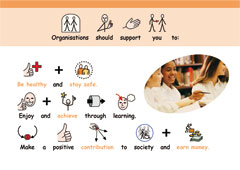 Information
about what 14 to 18 year old learners were entitled to was symbolised
in a joint project between Warwickshire Connexions, the Special Schools
co-ordinator and Widgit. Student surveys were also symbolised to enable
access for all. More detailed examples can be seen by following the link
the web page. - Learner
Entitlement Information
Information
about what 14 to 18 year old learners were entitled to was symbolised
in a joint project between Warwickshire Connexions, the Special Schools
co-ordinator and Widgit. Student surveys were also symbolised to enable
access for all. More detailed examples can be seen by following the link
the web page. - Learner
Entitlement Information
Transition between Infant, Junior, Primary and Secondary Schools
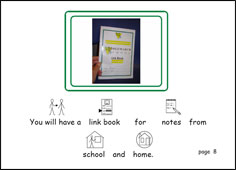 Transition
from one school to another can cause anxiety for pupils who find it difficult
to handle change. These booklets were made for pupils transferring from
Infant to Junior school, and Junior to Secondary School. They are personalised
for each pupil with photos of people and places they will encounter in
the new setting. Ideally the pupil will have been to visit the new school
and talked about what they would like photos of. It is useful to discuss
what things are causing particular worry, so they can be included in the
booklet. The pupils take the booklets home with them, so they can be looked
at for reassurance over the Summer Holiday. The Secondary school transfer
booklet was made for the pupil to take with him on Induction Day at the
end of the summer term. It gave him visual prompts about the site and
the places he needed to be. Some pupils use them for the first few weeks
of the new term.
Transition
from one school to another can cause anxiety for pupils who find it difficult
to handle change. These booklets were made for pupils transferring from
Infant to Junior school, and Junior to Secondary School. They are personalised
for each pupil with photos of people and places they will encounter in
the new setting. Ideally the pupil will have been to visit the new school
and talked about what they would like photos of. It is useful to discuss
what things are causing particular worry, so they can be included in the
booklet. The pupils take the booklets home with them, so they can be looked
at for reassurance over the Summer Holiday. The Secondary school transfer
booklet was made for the pupil to take with him on Induction Day at the
end of the summer term. It gave him visual prompts about the site and
the places he needed to be. Some pupils use them for the first few weeks
of the new term.
Download: Etone_school_transfer_booklet.pdf
Download: Individual_y3_transfer_book.pdf
Community support - enabling participation and individual autonomy
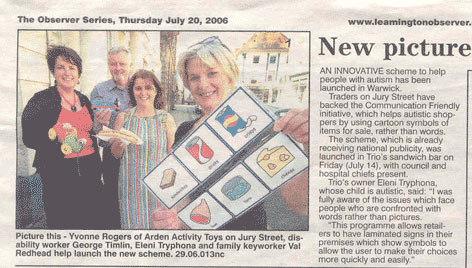 Work
in the community to facilitate independence within society.
Work
in the community to facilitate independence within society.
"An innovative scheme to help people with autism has been launched in Warwick. Traders in Jury Street have backed the Communication Friendly initiative, which helps autistic shoppers by using symbols of items for sale, rather than words. The scheme, which is already receiving national publicity, was launched in Trio's sandwich bar on Friday, with council and hospital chiefs present. Trio's owner, who's child is autistic said " I was fully aware of the issues which face people who are confronted by words rather than pictures. This programme allows retailers to have laminated signs in their premises which show symbols to allow the user to make their choices more quickly and easily"".
Enabling the school to meet targets by supporting pupils who find learning difficult
Geography
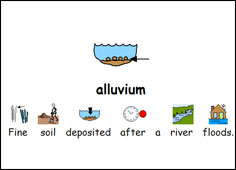 Geography resources have been made to support Key Stage 2 and 3 learners
with information about Rivers and Coasts. The packs give access to symbols
for all the key vocabulary along with photographs of many of the features
of Rivers and Coasts. The visual materials support students who have difficulty
acquiring and retaining new vocabulary. The symbols also help learners
to understand the concepts that are being taught and assist them in explaining
their understanding.
Geography resources have been made to support Key Stage 2 and 3 learners
with information about Rivers and Coasts. The packs give access to symbols
for all the key vocabulary along with photographs of many of the features
of Rivers and Coasts. The visual materials support students who have difficulty
acquiring and retaining new vocabulary. The symbols also help learners
to understand the concepts that are being taught and assist them in explaining
their understanding.
History
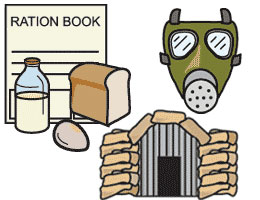 History packs are available on Romans, World War II, Egyptians, Greeks
and Victorians. A resource pack of activities is also available for each
topic, giving teachers ready made materials to use to reinforce learning.
Five different levels of differentiated books are included in each pack.
For example, in the World War II pack there is information on : World
War II (general overview), The Blitz, Life for Children, Life at Home
and The War in the East.
History packs are available on Romans, World War II, Egyptians, Greeks
and Victorians. A resource pack of activities is also available for each
topic, giving teachers ready made materials to use to reinforce learning.
Five different levels of differentiated books are included in each pack.
For example, in the World War II pack there is information on : World
War II (general overview), The Blitz, Life for Children, Life at Home
and The War in the East.
Literacy
There are many resources to support Literacy, such a Cinderella; one of five Traditional Stories. Materials to support Religious Festivals include Easter, Diwali, Hannukah and Christmas. These can be used with students across the Key Stages depending on their skill levels. The materials are also useful to support Assemblies and the graphics can be used in displays.
Yearly Calendar Resources packs give students visual support for concepts of time which are abstract and hard for some pupils to understand without a visual reference.
Symbolised sentence strips for stories such as Noah support sequencing activities. They can either be cut up and stuck in the right order, or can be copied by pupils into books.
Symbolised Play scripts for five traditional stories, Cinderella, The Three Pigs, Goldilocks, Snow White and The Three Billys Goats Gruff and the story of Diwali support speaking and listening targets in Key Stage 1 and 2.
Staff can download a series of early reading books that use the first 45 high frequency words. They are written round a friendly alien character called Zed who has adventures on earth.
Fifteen Big Books have packs with symbol flash cards for the key vocabulary, along with words and phrases that can be used to reinforce learning. The examples show Handa's Surprise and Owl Babies.
Science
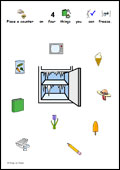
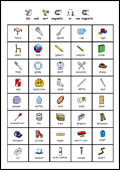 There are many activity sheets to support science topics from Foundation
Stage to Year 5. The examples below show a sheet where pupils indicate
what things would freeze by drawing a circle round them, and an activity
to discriminate between objects that are magnetic or non magnetic. Pupils
could cut these out and then stick on a separate sheet in the two groups.
There are many activity sheets to support science topics from Foundation
Stage to Year 5. The examples below show a sheet where pupils indicate
what things would freeze by drawing a circle round them, and an activity
to discriminate between objects that are magnetic or non magnetic. Pupils
could cut these out and then stick on a separate sheet in the two groups.
Financial Literacy - symbol supported vocabulary for Numeracy
It is important that all pupils have some understanding of money and time concepts. Symbolised numeracy vocabulary can support pupils in their learning within these and other areas of the numeracy curriculum. All the vocabulary as detailed in the Numeracy Framework has been symbolised.
Promotion of a Communication Friendly Environment within schools and settings
Schools have been encouraged to make their premises more 'communication friendly'. This could involve making a colour coded map to help visitors and pupils navigate round the building as well as symbolised signs on doors. Instructions on how to get into and exit the building are also helpful. Pictures of the staff working in a classroom with information about their role is useful for pupils and adults on site.
Supporting independent learning
The above examples show symbolised Numeracy vocabulary in a Y6 class, Literacy support in Y3 and support for telling the time in Key Stage 1.
- The Numeracy display has symbolised key words for problem solving skills. This gives a visual reminder for all students about what they need to think about. They act as prompt to help independent working.
- The Literacy display has real objects as well as symbols and shows the difference between fiction and non-fiction books, along with explanations of author, illustrator, title and publisher. Pupils are immediately cued into the lesson and are reminded about the learning from previous lessons.
- The clock has had symbols for o'clock, half past, quarter past and quarter to added to help pupils tell the time independently.
All these examples show how symbols can support independent learning.
Communicating
Some students have difficulties in the area of communicating and interacting with their peers and with adults. Such problems can make independent learning more difficult. Social Groups can help some pupils learn communication skills which supports independent interaction. Symbols can be used to reinforce vocabulary and concepts as these examples illustrate.


